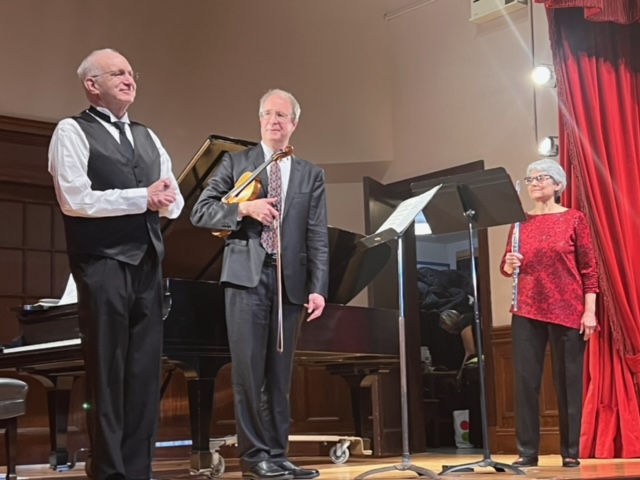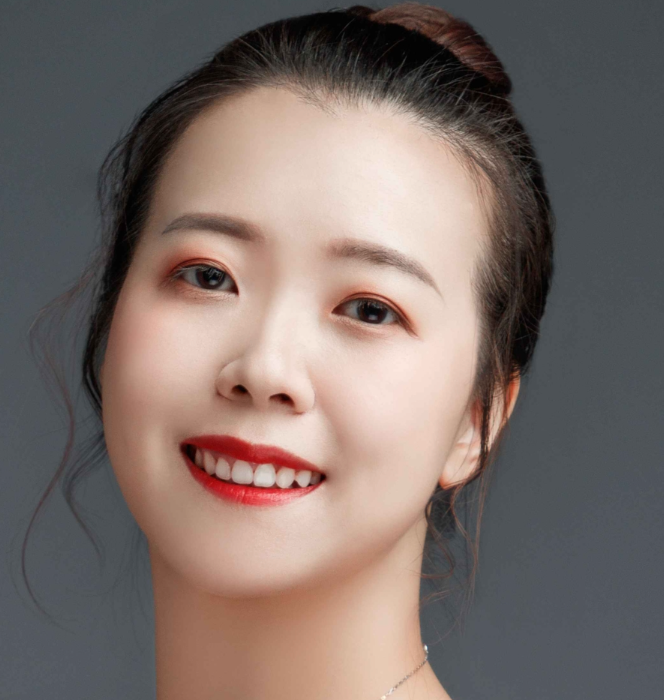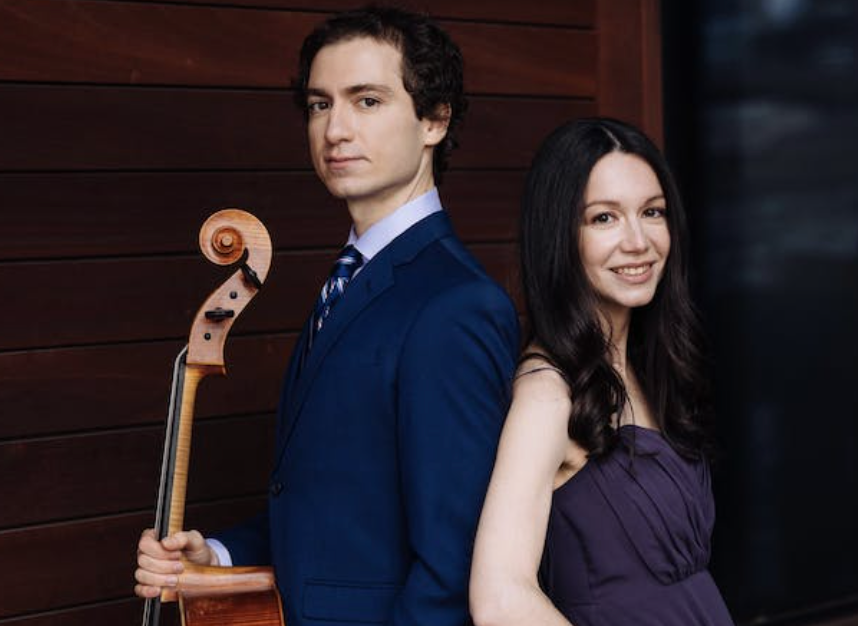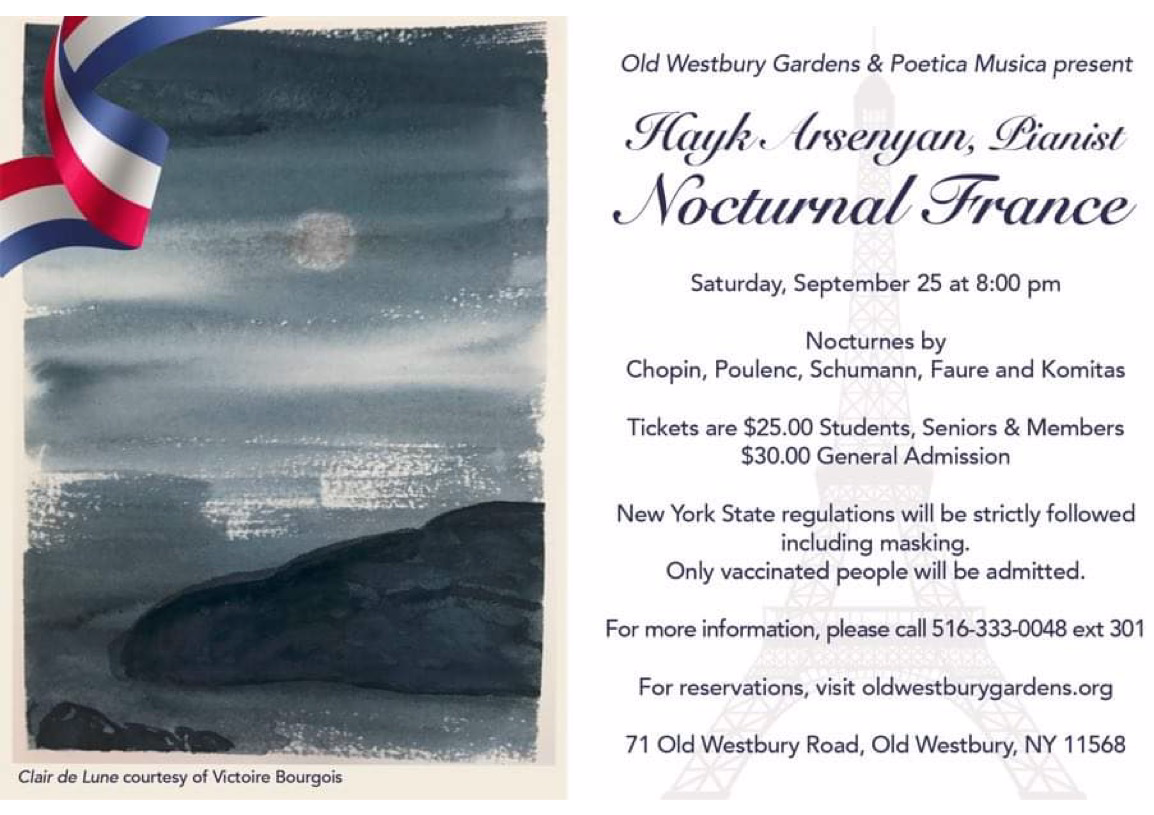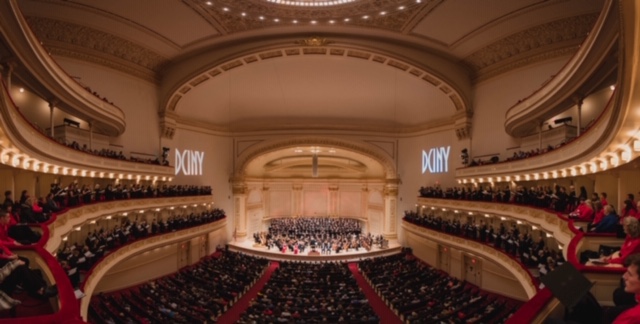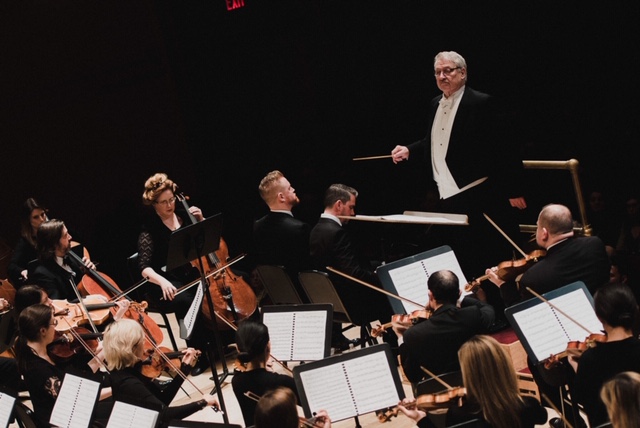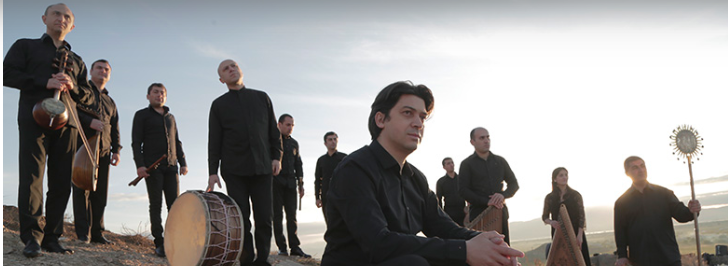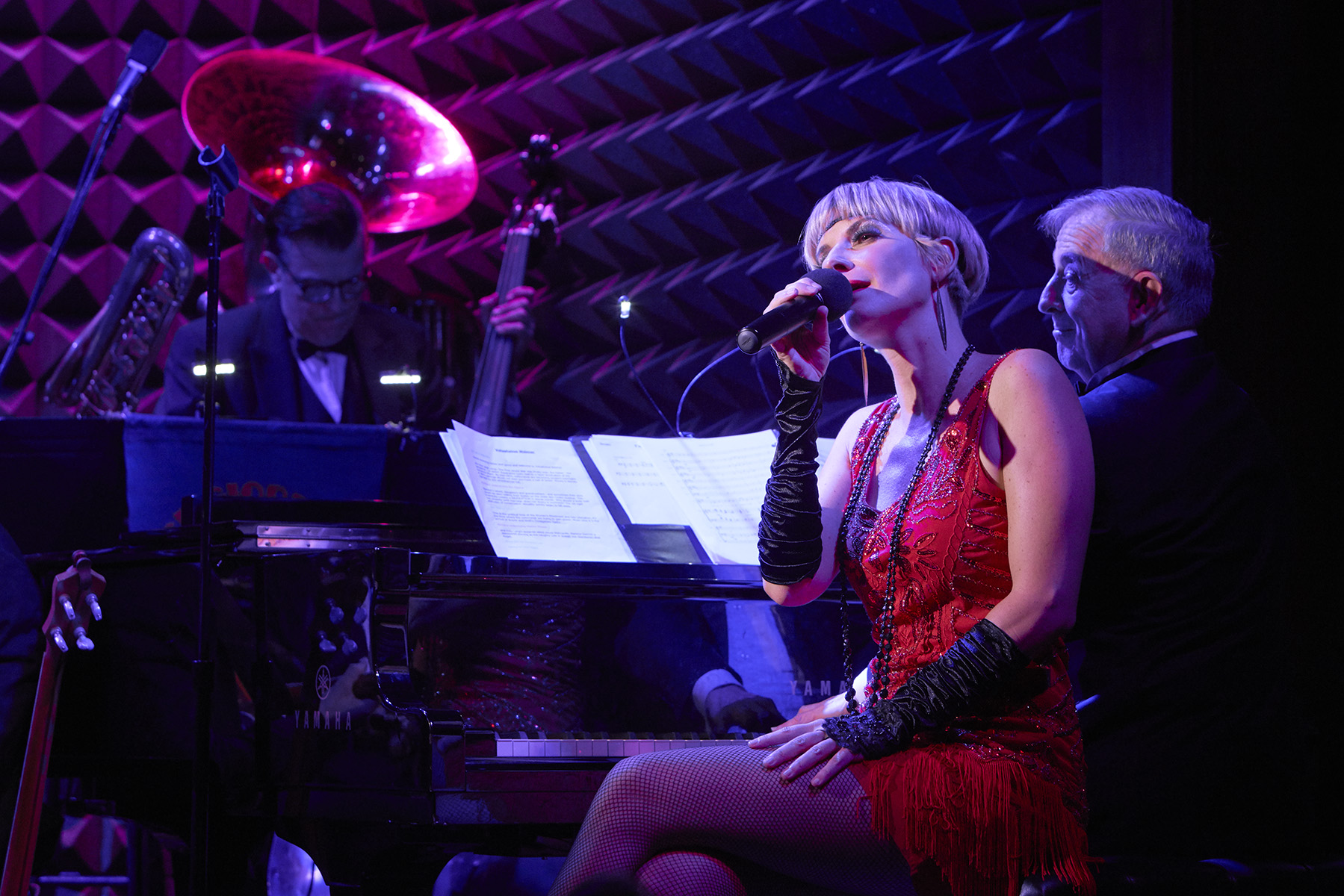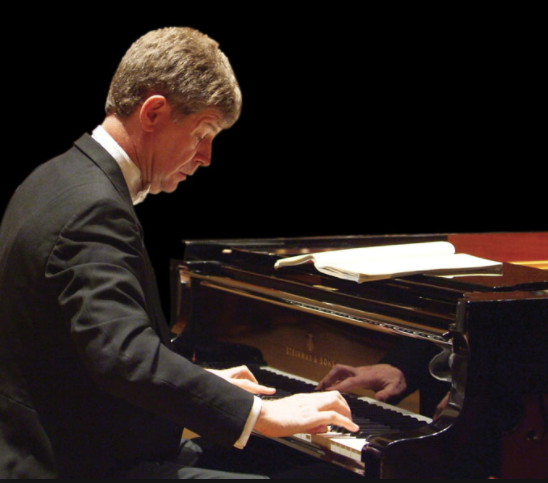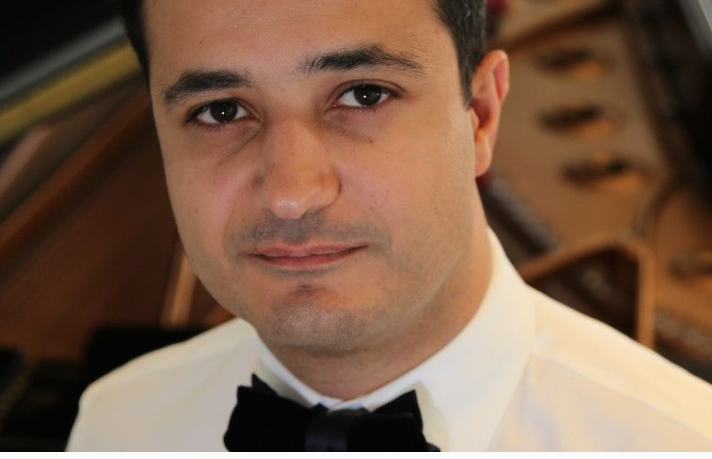Fall of the Weimar Republic: Dancing on the Precipice
David Witten, piano; Christine Lamprea, cello; Sue-Ellen Hershman-Tcherepnin, flute; Michael Roth, violin
Italian Academy – Columbia University, New York, NY
March 6, 2024
In the tumultuous aftermath of World War I, the Weimar Republic emerged as a melting pot of artistic innovation, and its music became an important reflection of the era’s social upheaval and cultural transformation. Deep in the exuberance of the 1920s and early 1930s, the music of the Weimar Republic encapsulates a unique blend of influences, from avant-garde experimentation to works that directly referenced political turmoil.
Tonight’s program featured four composers whose careers were thriving in the vibrant cultural scene of the Weimar Republic. Their musical expression was closely tied to the immediate social transformations of the time, especially those composers who fled in the mid-1930s due to the looming threat of the Nazi takeover.
The first piece on the program for solo piano was the Piano Sonata (1924) by Igor Stravinsky (1882-1971). This work had its world premiere at the Donaueschingen Summer Music Festival (Donaueschingener Musiktage), the first European festival dedicated to contemporary music. However, this is a work that saw Stravinsky heading in a new direction. The “neo-Baroque” style is apparent- pianist David Witten described it as “Bach with a head cold.” The lean writing in the first movement was handled with care and the sinewy lines were played with a suppleness that one craves in Baroque writing. As Mr. Witten stated, Stravinsky “atones for his sins” of dissonance and angularity in the final cadence. The second movement reminds one of an arioso of Bach, perhaps a nod to the Italian Concerto, BWV 971. The improvisatory quality came through with the constant pulse of the left-hand and the florid right-hand lines. However, this could have benefited from a calmer pacing. The third movement soared with a two-voice counterpoint throughout – the final long pedal tone, another Baroque technique, led us to the end where Stravinsky leaves the listener in a satisfying state of tonal harmony.
The next composer, Mario Castelnuovo-Tedesco (1895-1968), was an Italian-born composer who dedicated much of his life to being a film composer after he fled Europe to the United States in the early 1930s. The pieces performed tonight are titled Greeting Cards – they are musical “cryptograms”- each dedicated to a friend of his. Mr. Witten was joined by cellist Christine Lamprea for the first piece, Valse for Violoncello and Piano on the name of Gregor Piatigorsky (1954). The piece was tender and haunting, and Ms. Lamprea communicated clarity of tone and the sensuousness of the dance beautifully, and, of course, the nod to Tchaikovsky was a cheeky sorbet among some of the more adventurous harmonies. The following four works were for solo piano. Für Erna (1956) was played with warmth and had rich and surprising harmonies – a short and sweet homage. The following piece was more substantial, Etude on the name of Jacob Gimpel (1955) where Mr. Witten describes the melodic theme tainted by a dissonant note, as if it were a magnet leading the listener there. This etude was performed with command where the right hand’s whirling figures could be seen as romantic and cinematic. The ending communicated a mystical feeling. Ninna Nanna (Cradle Song) (1952) is not a “Greeting Card” but a lovely canonic lullaby – a sensitive performance. The final piece on the first half of the program was La torre del diavolo (1960). This dramatic piece had thoughtful pacing and effective rumbles from the bass.
After a short intermission, we were treated to three pieces by Paul Ben-Haim (1897-1974), a German composer who also fled Europe to Tel Aviv in 1933. Much of his composition is inspired by and references Jewish and Sephardic music traditions. Mr. Witten was joined by flutist Sue-Ellen Hershman-Tcherepnin for these three pieces. The first, Arioso, had a drone accompaniment in the piano which was heartbreaking, perhaps personifying the weariness of a summer’s day – the flute melody had a languid quality and was performed by Ms. Hershman-Tcherepnin with ease. Ballad was hypnotic and the rhetorical elements of the oral tradition of storytelling were clearly communicated in the flute part. Sephardic Melody is based on a traditional folk tune from the Sephardic-Jewish tradition. It had a melismatic, guttural, and free cadenza which communicated an ancient quality in the music with a mournful tone. The improvisatory and decorative piano part was played with great freedom but never sacrificing ensemble – it was a very moving piece.
The final selection on the program was another work that was premiered at the Donaueschingen Summer Music Festival, the Concerto da Camera, Op. 33, by Alexander Tcherepnin (1899-1977). This evening it was performed as a trio with violin, flute and piano as arranged by the composer himself. Mr. Witten was joined by Michael Roth on violin and once again by Sue-Ellen Hershman-Tcherepnin on flute.
The first movement, Allegro maestoso, had lean writing and a unison rhythm. The ensemble was committed to communicating the drama of the work although every now and then the pulse became somewhat unclear. The contrasting section was more playful. This short movement ended suddenly with a dramatic restatement of the main theme. The second movement, Andantino, had a somber opening and the interplay between the parts was the feature. The repeated metronomic rhythm in the violin and flute seemed to communicate the monotony of time. This dark and humorless movement was quite effective. In contrast, the third movement, Vivace, was full of energy. The work was performed with a subtle severity which could have been exploited even more. The middle section had an eerie nostalgia performed with great sway, and the unassuming ending worked very well. The last movement, Allegro molto, had great rhythmic vitality and the ensemble was able to display virtuosity and convey the dissonances in a compelling way.
This performance of works from the era of the Weimar Republic is an excellent example of why musicians should continue to explore new works constantly. Aside from the Piano Sonata by Stravinsky, all these works were new to this reviewer, and I’m sure as well to many of the audience present this evening. The commitment to this music by David Witten is admirable and I look forward to hearing more works by these composers performed by him and his colleagues. It is also exciting that the festival Fall of the Weimar Republic: Dancing on the Precipice curated by Carnegie Hall will be ongoing until May. I hope to be able to attend some of those concerts in the near future. Bravo to all!
Walter Aparicio

